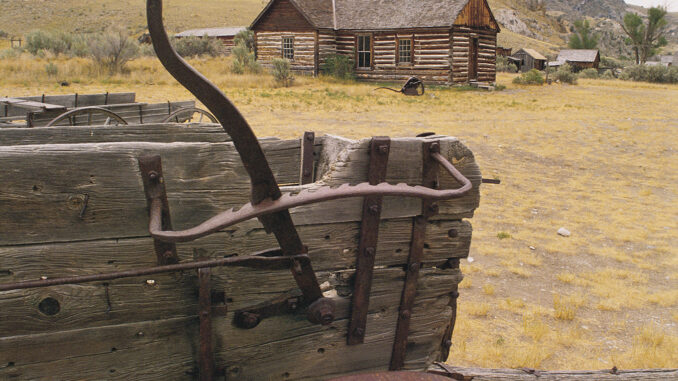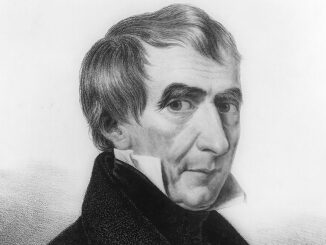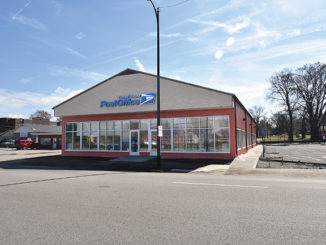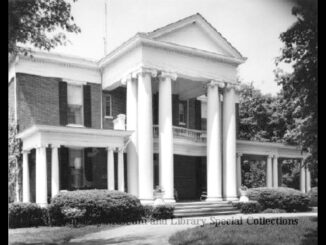
Recorded history has a wealth of pages teeming with the life of the male pioneer, his exploring, his claiming of land grants, the difficulty of travel to the new land, and the multitude of tasks involved in establishing a home and raising crops. These backbreaking tasks required a vision, commitment, iron grit, a determination and a small degree of foolhardiness. He is the forerunner of the early towns and counties and a hero to many.
When settling onto the new land, the new landowner was often accompanied by his wife and family. They, too, suffered the hardships of travel and aided in the tasks of securing housing and preparing the land for raising food. Often the female worked alone while the male family member hunted for animals. The hardships of early settlement were experienced by all members of the early pioneer family, but the woman experienced a unique adjustment to her usual status. In the wilderness she experienced few social constraints which she felt in society back home. She had to carve out a new place in the family and a wider societal structure with other settlers. It was truly a new land of opportunity for the woman of the family.
Before the area we call Bowling Green was even settled, there are stories written about other settlers in Kentucky where the female member of the family was highlighted. Mary Draper Ingles is an example. While her husband, William Ingles, and other men were harvesting crops, she was attacked and captured by Shawnee Indians. Her two sons, Thomas and George, and her sister-in-law were also taken on a month’s journey to the Indian village. In September 1755, over two months after capture, they managed to escape and, with the help of other settlers, she was reunited with her husband and to her original home in Virginia. Her son, Robert, passed away several days after his capture. Thomas was returned to his family in 1768.
The story of Virginia (Jenny) Sellards Wiley is very similar. While her husband was away, she was captured by Indians, who killed her brother and her three children. Her story, like Mrs. Ingles, can be found in the local historical group publication, the Longhunter Vol. XX and in the Kentucky Museum. The modern song “I Am Woman” would be an apt description of the pioneer female. “I am woman, I am invincible.”
Closer to the time of the birth of our city is another bit of recorded history relating the experience of a Kentucky wife, also recorded in the Longhunter Vol. XX. It is a letter of an early settler to her mother back in Virginia.
Gasper River, Kentucky
March 2, 1794
Dear Mammy:
King Fraser came to our cabin yesterday and stayed all night with us. He brought us beet and onion seed and gave me a needle and some flax seed.
We came here because Tolliver hired Sam to live on the Ball and hold it. One of our horses died at Cumberland Gap and Sam sold the other one to a man for some food and ammunition and we made a boat and came down to the river to the fort and from there walked here and put up a log cabin. We rowed down the river by night and laid by in the day and we walked three or four nights pretty near all night.
We hear Mr. Tolliver is going to send some more people out here and I wish he would as it is lonesome when Sam is gone.
We have about two or three acres cleared and planted in corn and pum[p]kins and we have enough venison dried to last for a year. My yellow linsey dress is nearly worn out but the cottonade is not. Sam made me a buckskin apron.
There are folks about twelve miles from us on the Big Barren River and a Mr. McFadden who was hunting stray horses stayed all night with us about a month ago. He begged us to come up where he lived and said it was not safe for us here. But we didn’t feel afraid if it was not so lonesome. King said he was going to meet some surveyors and hunt for some military land.
Sometimes I cry about losing Bounce but Sam says that he knows the Ingin that stuck a tomahawk into Bounce won’t ever kill another dog for he put a bullet into his hide.
They (the Indians) were here about one whole day whooping and hollering about – but they were great cowards. Sam says Tolliver will come out here next year and if he does we will go back on a visit.
Tell ever[y]body howdy and if you see anyone coming here write to me and send me some things. I can get them at McFadden’s.
Your affectionate daughter
Daphne
In the early years, life for the female woman was, as expected, challenging. Giving birth in crude settings, caring for children, tending the garden, chopping wood, tending the fires, carrying the water from the creek, harvesting the crops, mending and cleaning the clothes and numerous other domestic tasks. As time passed, routine established, and progress made, the growth of social contacts became more prevalent through church and community celebrations and community events. Societal standards emerged within the area and once again life was pleasurable as it had been in Virginia or North Carolina or from wherever their home base.
Certainly, progress was made in the quality of the pioneer woman but her role in the family was still challenging. When the Honorable Joseph Underwood was absent from his estate serving in the U.S. Senate, Mrs. Elizabeth Underwood had major tasks to perform daily: “Supervised the provisioning of the larder with enough food to last the winter and enough wood to stroke the fireplaces, rendered lard, made candles, oversaw the operation of the large Underwood farm… entertained droves of friends, relatives, and their servants who came and often stayed far too long, outfitted and made preparations for a family of slaves who immigrated to Liberia, collected her husband’s legal fees, supervised the family finances, planned a fine new home, kept up with current events, and advised her husband on how to vote in Congress” (Longhunter Vol. XXIX.)
Time has produced an old saying, “A woman’s work is never done.” True or not, the idea portrays the importance of the female in our culture. Truly, womanhood is the heart of life… but then again, this writer may be prejudiced.
-by Mary Alice Oliver
About the Author: Mary Alice Oliver is a Bowling Green native who is a 1950 graduate of Bowling Green High School. She retired from Warren County Schools after 40 years in education. Visiting familiar sites, researching historical records and sharing memories with friends are her passions.








